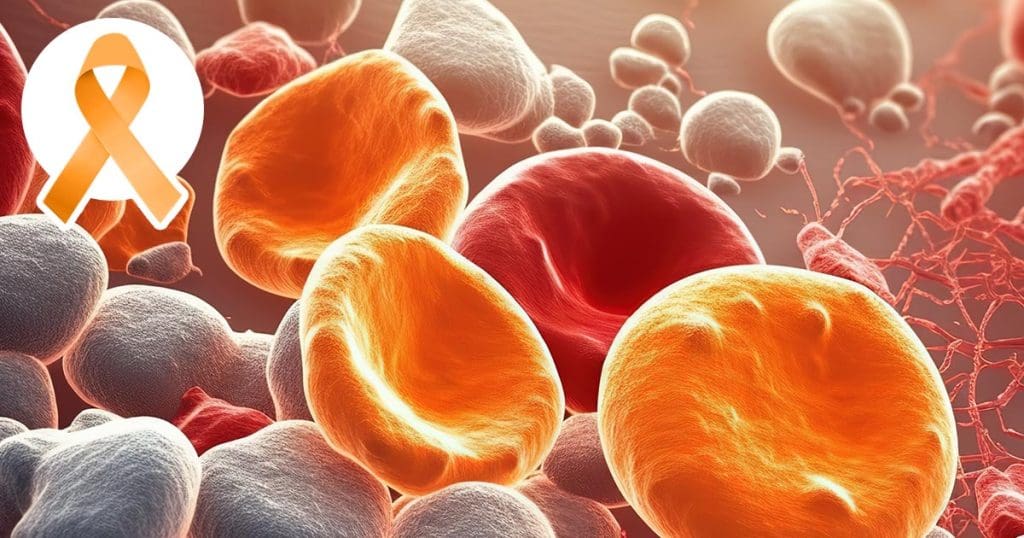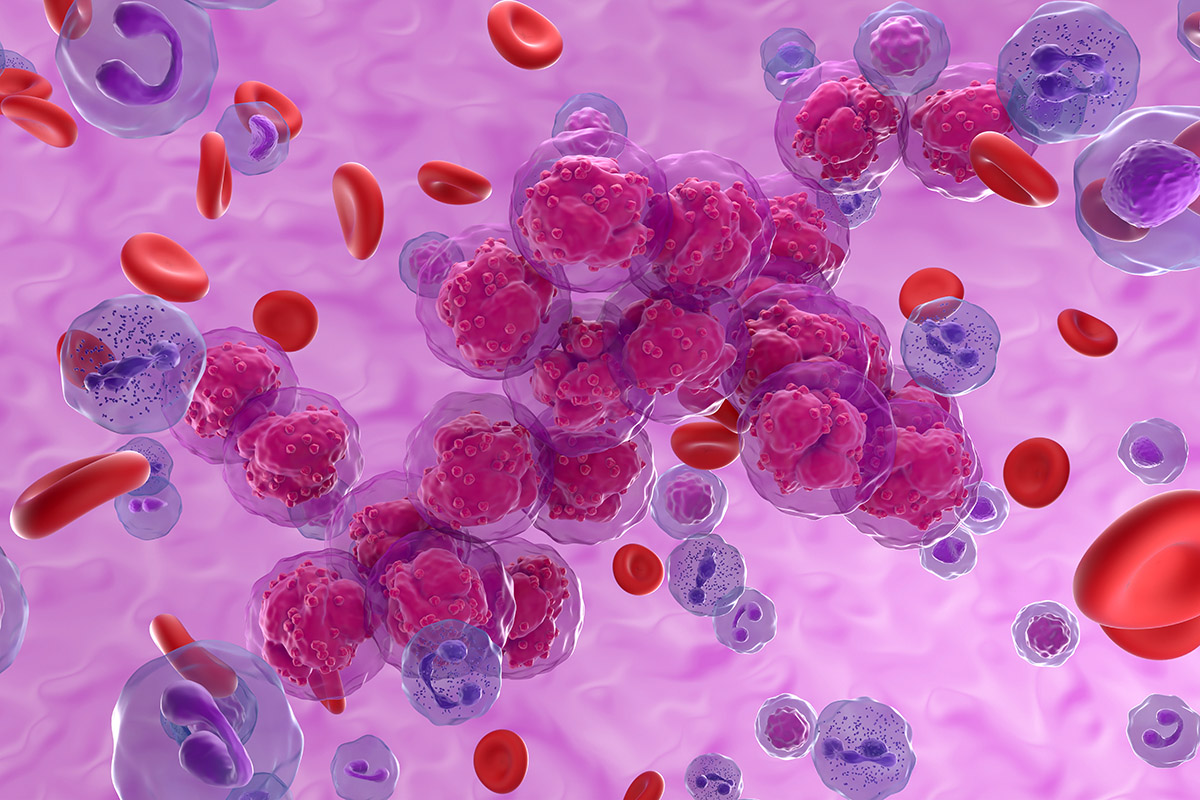Last Updated on November 14, 2025 by

How is blood cancer first detected? Knowing leukemia symptoms is the crucial first step. This powerful guide details the signs often missed.
Knowing leukemia symptoms is key to catching it early. Common cancer symptoms include feeling very tired, losing weight, and getting sick often. These signs can mean you might have blood cancer.
Blood cancer is not just one disease. It includes leukemia, lymphoma, and multiple myeloma. These cancers affect the blood, bone marrow, and lymphatic system. They make it hard for the body to fight infections and make healthy cells.

There are many types of blood cancers, each with its own traits. Leukemia is a cancer of the blood and bone marrow. It makes abnormal white blood cells. Lymphoma affects the lymphatic system, which is part of the immune system. Multiple myeloma is a cancer of plasma cells, a type of white blood cell in the bone marrow.
About 70% of leukemia cases are found by chance during blood tests before symptoms show. This shows how important regular blood tests are for early detection.
Knowing the risk factors and demographics of blood cancers is key for early detection and prevention. Genetic mutations, radiation exposure, and past chemotherapy are risk factors. Age also plays a big role, with risk increasing with age.
Blood cancers can hit anyone, but some types are more common in certain age groups. For example, acute lymphoblastic leukemia (ALL) is common in kids. Chronic lymphocytic leukemia (CLL) is more common in older adults.
Knowing the signs of leukemia is key to better health. Leukemia is a blood cancer that shows itself in many ways. These symptoms can be small but very telling.
Persistent fatigue and weakness are common leukemia symptoms. This happens because there are fewer red blood cells. Red blood cells carry oxygen, and leukemia cells take their place in the bone marrow.
This leads to anemia and its symptoms. Anemia is when the body doesn’t have enough healthy red blood cells.
People with leukemia often get sick more easily. This is because their immune system is weak. Leukemia makes it hard for the body to make white blood cells.
White blood cells fight off infections. Without enough, the body can’t fight off germs well.

Easy bruising and unusual bleeding are big signs of leukemia. These happen because leukemia affects platelet production. Platelets help blood clot, and without enough, bleeding is a problem.
This can cause bruises, nosebleeds, or bleeding gums. It’s a sign that something is wrong.
Swollen lymph nodes are another important symptom. Leukemia makes lymph nodes swell up. This happens because cancer cells build up in them.
Lymph nodes can swell in many places. This includes the neck, armpits, and groin.
Spotting these symptoms of cancer early is vital.
New tests like CancerSEEK and Galleri are helping find cancer early. These tests are a big step forward. They help find leukemia and other cancers when they’re easier to treat.
Leukemia is often found through routine blood tests before symptoms show. This shows how important blood tests are in catching cancer early.
About 70% of leukemia cases are found by chance during blood tests before symptoms appear.
Blood tests can find important signs that might mean cancer, like:
These signs can point to leukemia or other blood cancers, leading to more tests.
If you’re always tired, keep getting sick, or notice unusual bleeding, talk to your doctor. They might suggest a blood test for cancer signs. Catching cancer early through blood tests can lead to better treatment results.
Regular health check-ups and blood tests are key for catching cancer early. Finding cancer before symptoms show can lead to better treatment and a better chance of recovery.
Physical exams are key in spotting blood cancer. Doctors look for signs that might show leukemia or lymphoma. These signs can be found during a check-up.
An enlarged spleen or liver is a common sign in blood cancer patients. This can cause pain in the upper left or right abdomen. It might also make you feel full, even when you’re not eating.
Blood cancer can show up in the skin, like petechiae. These are small spots from tiny bleeds. Other signs include bruising, purple spots, and pale skin.
Blood cancer can also hit the brain and nerves. This might cause headaches, confusion, seizures, or weakness. If you notice these, see a doctor right away.
Oral and gum issues can hint at blood cancer. Look out for swollen gums, bleeding, or mouth ulcers. These are often seen in some types of leukemia.
But remember, these signs can also mean other health problems. To confirm blood cancer, more tests are needed. These include blood tests, bone marrow biopsies, and imaging.
After a first sign of blood cancer, many tests are done to know the exact disease and its stage. These tests are key to finding the right treatment.
A bone marrow biopsy is the top test for blood cancer,
The bone marrow biopsy process includes getting ready, taking out the sample, and looking at it. It’s a major tool for cancer details.
Imaging tests are key for blood cancer stages. CT scans, PET scans, and MRI show how far cancer has spread. These images help doctors plan the best treatment.
Molecular and genetic tests are vital for blood cancer. They use PCR (Polymerase Chain Reaction) and FISH (Fluorescence In Situ Hybridization) to find genetic changes. This info helps choose the right treatments and predict outcomes.
Immunophenotyping and flow cytometry look at cancer cell proteins. These tests help tell cancer types apart and understand their traits. The results are key for diagnosis, predicting, and treatment planning.
In summary, tests like bone marrow biopsy, imaging, molecular and genetic tests, and immunophenotyping are vital. They confirm blood cancer and guide treatment.
Early cancer detection is getting a boost from new liquid biopsy methods. This non-invasive test looks at DNA, RNA, and other markers in blood. It’s changing how we find cancer.
CancerSEEK is a leading liquid biopsy test with over 98% specificity for early cancer detection. It can spot eight common cancers with just one blood test. Studies show it catches early cancers in up to 65% of cases.
For more on CancerSEEK and similar tests, check out studies on PMC.
The Galleri test is another big step in liquid biopsy. It finds over 50 types of cancer with high accuracy. It also helps pinpoint where the cancer started, guiding treatment.
Liv Hospital leads in using advanced liquid biopsy for cancer detection. They use the latest tools for personalized treatment plans. Their goal is better patient outcomes through early detection and targeted care.
The use of CancerSEEK, Galleri, and Liv Hospital’s methods marks a big change in cancer care. These technologies promise to boost survival rates by catching cancer early and treating it personally.
Early detection is key for treating blood cancer effectively. Knowing the signs of leukemia and cancer early can greatly improve treatment results.
The UPMC Hillman Cancer Center stresses the need for early detection and treatment of blood cancer. Being aware of risk factors and symptoms can help people get medical help quickly.
Routine blood tests and advanced tests like liquid biopsy are important for catching blood cancer early. By using these tools and staying informed, people can take early action against blood cancer.
Symptoms of blood cancer include feeling very tired and weak. You might also get sick a lot or bleed easily. Swollen lymph nodes are another sign.
Blood cancer is often found through routine blood tests. These tests can show if there are any cancer signs in the blood.
Blood cancers include leukemia, lymphoma, and multiple myeloma. Each type has its own signs and risks.
A bone marrow biopsy is key for diagnosing blood cancer. It lets doctors check the bone marrow cells and tissue.
Yes, blood tests can find cancer early, even before symptoms show up. Studies show up to 70% of blood cancers are caught early this way.
Abnormal white, red blood cell counts, and platelets can hint at blood cancer. A doctor should check these signs.
Swollen lymph nodes can mean lymphoma or other blood cancers. A doctor should look into it to find the cause.
Liquid biopsy technologies, like CancerSEEK and Galleri, can spot cancer early. This often happens before symptoms show up, which can lead to better treatment.
Risk factors include age, family history, and exposure to harmful chemicals or radiation. Certain genetic disorders also increase the risk.
Yes, signs like an enlarged spleen or liver, skin issues, and neurological symptoms can point to blood cancer. A doctor should check these signs.
Finding blood cancer early is vital. It means doctors can start treatment sooner, which can lead to better outcomes.
Subscribe to our e-newsletter to stay informed about the latest innovations in the world of health and exclusive offers!